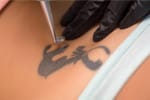Gynecomastia is a condition in which men experience abnormal growth of breast tissue, leading to the enlargement of the breasts.
This can be an extremely embarrassing problem for many men, affecting their self-esteem and confidence.
Luckily, gynecomastia surgery offers a solution to this issue by removing and reshaping the breast tissue, thus improving the chest's overall appearance.
However, as with any surgery, the recovery process is crucial to ensure proper healing and satisfactory results.
In this article, we'll discuss 10 essential gynecomastia surgery recovery tips to help you get back on your feet faster and make the most of your new, more masculine-shaped chest.
1)) Follow Your Surgeon's Instructions
Your surgeon will provide you with detailed instructions to follow during your recovery period.
It's essential to adhere to these guidelines to ensure a safe and smooth healing process.
These instructions may include wound care, post-surgery medication, compression garments, and when to resume physical activities.
2)) Take Time Off Work And Plan For Assistance
Arrange for at least one week off work to focus on your recovery.
Depending on the nature of your job, you may need additional time to allow your body to heal properly before resuming strenuous activities.
Consider arranging assistance from family or friends to help with daily tasks or childcare, as you'll likely need support during the initial recovery phase.
3)) Wear Your Compression Garment
Your surgeon will likely recommend wearing a compression garment following your gynecomastia surgery.
This garment helps minimize swelling, supports your chest tissues, and aids in reshaping your chest for an improved contour.
Follow your surgeon's advice on when and for how long to wear the compression garment.
4)) Manage Your Pain
Some discomfort and pain are expected in the days following gynecomastia surgery, but this can usually be managed with the help of pain relief medication prescribed by your surgeon.
Take the medication regularly as directed to maintain your comfort levels and refrain from taking any additional painkillers without consulting your surgeon first.
5)) Monitor Your Progress And Watch For Complications
During your recovery, it's essential to keep a close eye on your surgical wounds and overall healing progress.
Watch for signs of infection, such as increased redness around the incision sites, sudden swelling, or pus discharge.
If you notice any unusual symptoms, contact your surgeon immediately.
6)) Keep Yourself Hydrated And Eat A Balanced Diet
Staying hydrated and consuming a balanced diet during the recovery period are crucial for several reasons.
Hydration is essential for promoting healing, while a balanced diet can help your body receive adequate nutrients to support the recovery process.
Eating well will also help with your overall well-being and energy levels.
7)) Gradually Ease Into Physical Activity
While it's essential to take it easy during the initial recovery period, slowly reintroducing moderate physical activities can aid the healing process.
Short, gentle walks can help improve circulation and prevent blood clots. Be certain to wear high-quality walking shoes to protect your leg joints from the impact of each step.
Be sure to consult your surgeon before resuming more vigorous activities or exercise, as this will depend on your individual recovery progress.
8)) Avoid Smoking And Alcohol
Smoking and alcohol consumption can negatively impact the healing process by reducing blood flow to the surgical area and hindering tissue repair.
It's crucial to avoid smoking and limit your alcohol intake during your gynecomastia surgery recovery period to ensure a smooth healing process.
9)) Sleep In An Upright Position
Elevating your upper body while sleeping can help alleviate swelling and discomfort.
It's also crucial not to sleep on your chest, as this can disrupt the healing process and result in undesirable outcomes.
An inexpensive way to accomplish this is to use comfortable pillows to elevate your upper body.
10)) Be Patient And Realistic With Your Expectations
Healing from gynecomastia surgery takes time, and it's vital to be patient throughout the process.
Keep in mind that swelling and bruising may persist for several weeks or even months, so give your body time to heal and adjust to its new contours.
Remember, the full results of your surgery may not be visible for up to a year after the procedure.
Conclusion
Gynecomastia surgery can significantly improve the lives of those affected by the condition by restoring a more masculine chest appearance.
Following these ten recovery tips can help you achieve the best possible results and get back to your everyday activities sooner.
The key to a successful recovery is listening to your body, adhering to your surgeon's advice, and maintaining a positive attitude throughout your healing journey.
Download Our Free E-book!








